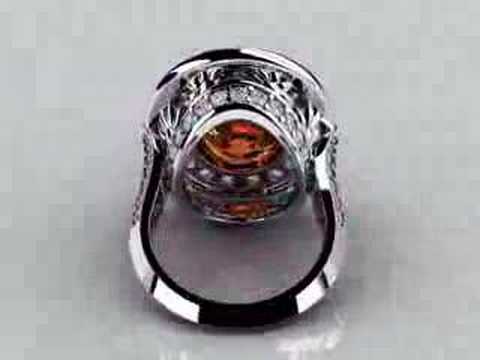Hi Don,
I disagree, slightly.
Matrix (Gemvision Corp) is not a stand-alone program. It is a
plug-in for Rhino (McNeel and Associates). It allows one to perform
certain operations much faster and in a more user-friendly way than
Rhino does alone, specifically for designing jewelry.
When you use Matrix, you ARE running Rhino, so your claim of not
knowing anything about Rhino is, well, based on a lack of knowledge
about the product more than anything else. No fault, lots of folks
don’t understand this. Certainly, in the classes, and in the
marketing for the product, Rhino is mentioned as little as possible,
lest the potential customer buy Rhino instead. In fact, when you
bought Matrix, you also purchased a full seat of Rhino, as that is a
contractual agreement between between Gemvision and the makers of
Rhino (McNeel). Many say that Matrix is “Rhino on steroids”, I think
one of the salespeople coined that phrase.
Also, you cannot, as you claim, render ANYTHING in Matrix. When you
perform a render in Matrix, you are using (transparently) a program
called Flamingo, which is an option when you purchase Rhino, and
which is included in your Matrix purchase. And when you render
within Matrix, you are in fact using a subset of ther Rhino tools to
engage Flamingo. In fact, many of the more experienced users of
Matrix now forego Flamingo and use VueRay instead for their
renderings. So the rendering program is just another stand-alone
program.
One should note that Rhino and Flamingo together cost $995, unless
you are a student, in whch case it costs $195. I don’t know what
Matrix costs these days, but I’m pretty sure it’s somewhere North of
$6,000. Big difference, no?
I can assure you that there are many designers happily and
efficiently designing with Rhino and Flamingo or their renderer of
choice and there are many designers happily using Matrix as well.
I was a beta tester for Rhino before anyone at Gemvision knew it
existed, and was a beta tester for Matrix as well. I was also
employed at Gemvision for two years as their sales manager, and,
frankly, I’m surprised that you could purchase the product without
having a clearer understanding of its foundation on Rhino. All who
know me personally know that my relationship with Gemvision did NOT
end well, but I still believe that if you can afford the financial
and time investment, Matrix is a very fine tool to have in your
toolbox.
Were I beginning a career in jewelry design today, I would CONSIDER
both Artcam and Matrix, as each has its weak and strong points. But I
would most certainly own a seat of RhinoGold. You cannot beat it for
the price and for the community of users worldwide.
Also, those who understand and can use Rhino just breeze through the
Matrix classes. In Matrix, the left side of the screen is Matrix,
the right side (the four windows) IS Rhino.
Wayne Emery
The Gemcutter
